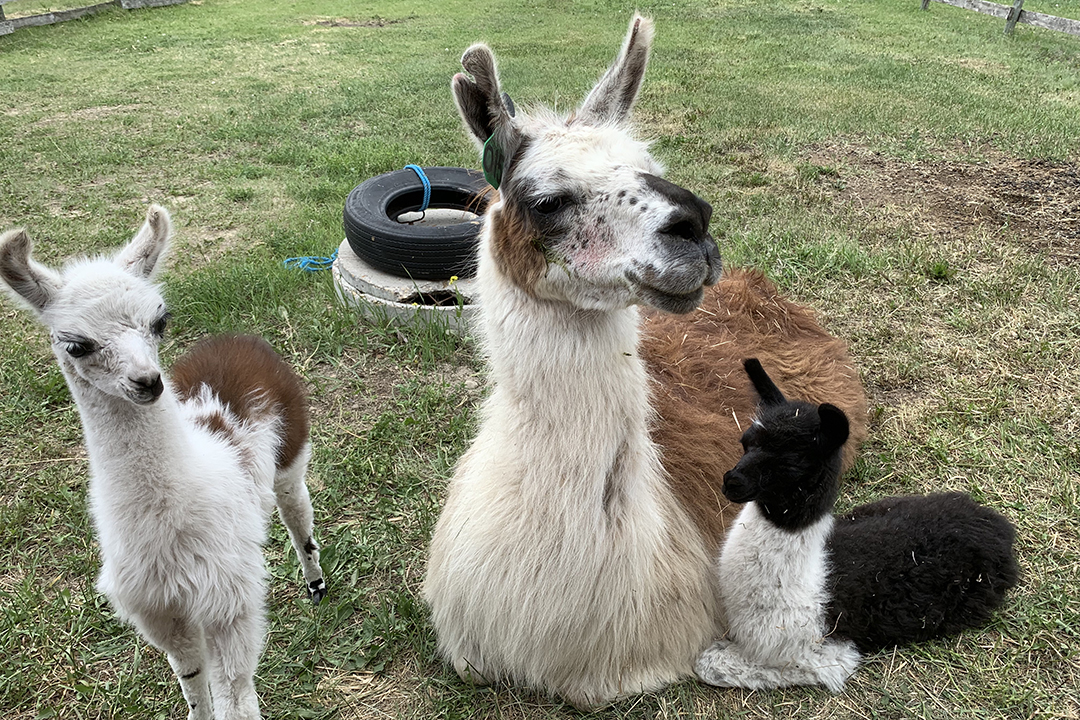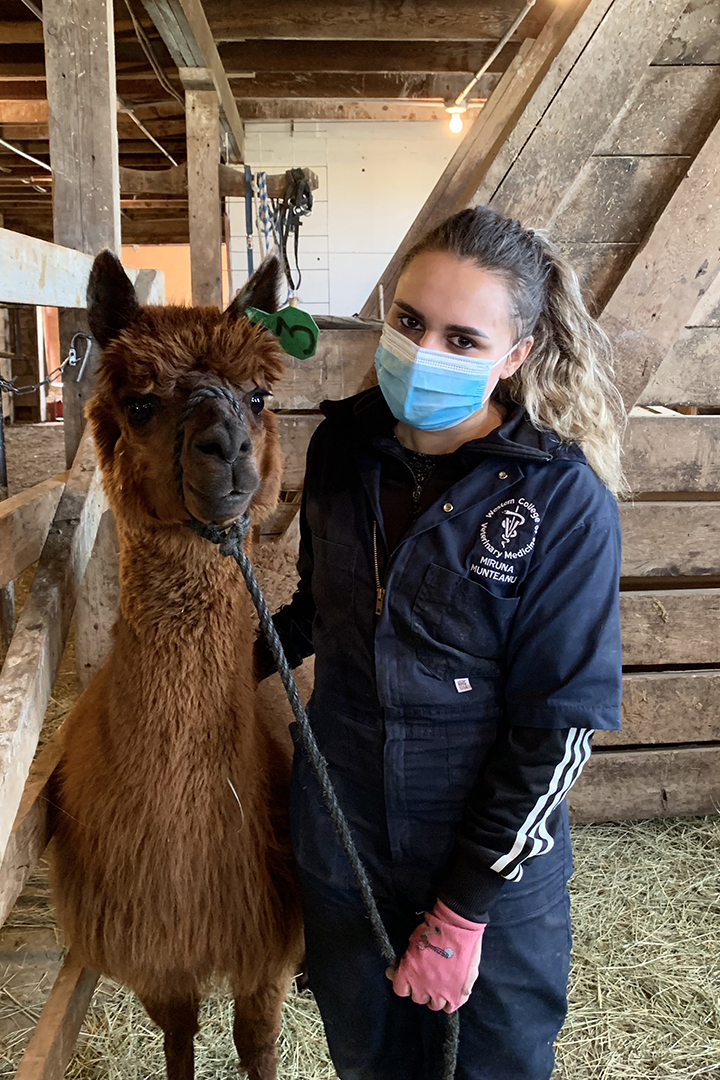
WCVM researcher uses ultrasound images to explore alpacas’ reproductive patterns
As a professor and prolific researcher at the Western College of Veterinary Medicine (WCVM), Dr. Jaswant Singh has explored the reproductive physiology of cattle, bison and a variety of other mammals.
By Miruna Munteanu
His latest project is aimed at a better understanding of the reproductive dynamics of alpacas — a species that is relatively new to Canadian agriculture. By providing producers with a better understanding of reproductive physiology, Singh hopes he is helping them to develop and implement efficient herd management practices.
“It is not just for alpacas that we are doing this study. This [study’s results] will have implications for other domestic animals,” says Singh. “My goal has always been to assist farmers, and now that goal has been refined to provide new and innovative ways to support reproduction in farm animals.”
Using ultrasonography, Singh and his research team have been able to quantify the synchronous growth of follicles in alpacas. An ovarian follicle is a fluid-filled sac that contains an oocyte or immature egg. Several follicles develop during each reproductive cycle, but typically, only one follicle releases a mature egg during ovulation. Unlike other ruminants, camelids are considered “induced ovulators” as they require copulation (sexual intercourse) for ovulation to occur.
The researchers also tested the effects of a GnRH antagonist drug during their project. This synthetic hormone blocks the effects of gonadotropin releasing hormone (GnRH), which controls the secretion of two other hormones in female mammals: follicle stimulating hormone (FSH) and luteinizing hormone (LH).
In human medicine, reproduction specialists have used GnRH antagonists during fertility treatment for women. Now, Singh’s team is investigating the drug’s effects on ovarian function in domestic animals in ways that were not previously thought of. Previous research conducted at the WCVM has shown promising results in cattle, the research team’s hope is that GnRH antagonists can synchronize ovulations in camelids.
The WCVM study involved early mornings of herding, haltering and performing transrectal ultrasound examinations on 21 alpacas. As the researchers used their daily ultrasound exams to detect the ovaries as well as the number and size of follicles within each ovary, they identified and traced the follicular patterns.
In addition, they recorded the number and diameter of the follicles daily so they could classify the growth and regression of the dominant follicle — the largest antral (natural chamber) follicle of the wave based on its diameter.
To test the GnRH anatagonist, the researchers divided the alpacas into three groups of seven animals — including one control group that received no treatment. Next, they administered the hormone to the second group on day five of their follicular wave and to the third group on day 10 of their wave. Then, they used the daily ultrasound exams to monitor the drug’s effect on the growth of the dominant follicle.
The study’s findings provide important information about alpaca reproduction as well as the function of GnRH antagonist receptors — information that can be applied to multiple species.
Although more work needs to be done within the scope of reproduction, studies such as this one can provide important information that help livestock producers in many different areas such as artificial insemination.
Miruna Munteanu of Calgary, Alta., is a third-year veterinary student at the WCVM who worked as a summer research student in 2021. Her story is part of a series of articles written by WCVM summer research students.
